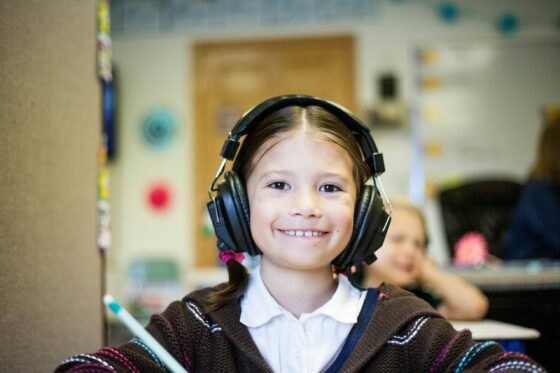As summer comes to a close, students and teachers alike often face a mix of excitement and anxiety about the new school year. The transition back to school can bring about challenges such as adapting to new schedules, meeting new people, and managing academic pressures. One effective way to support students during this transition is by using The Imagine Project, a program designed to foster emotional resilience and personal growth through creative expression.
What is The Imagine Project?
The Imagine Project is an evidence-based program that utilizes expressive writing and storytelling to help students process their emotions and experiences. Developed by Dianne Maroney, the project encourages students to write “Imagine” stories where they reflect on their own challenges and triumphs. The simple act of putting thoughts into words can provide a powerful outlet for students to express their feelings, share their experiences, and build empathy for others.
By allowing students to create their own narratives, The Imagine Project not only helps them to identify and process emotions but also empowers them to see themselves as strong, resilient individuals capable of overcoming obstacles. This is especially beneficial during the back-to-school season when students may feel overwhelmed by changes and new expectations.
Implementing The Imagine Project in the Classroom
Incorporating The Imagine Project into the classroom is simple yet highly impactful. Here are some steps educators can take to seamlessly integrate the project into their back-to-school plans:
- Introduce the Concept of “Imagine” Stories
Start by explaining the concept of “Imagine” stories to your students. Share examples of how individuals have used these stories to express personal experiences, challenges, or dreams. This introduction can spark students’ curiosity and open their minds to the idea of self-expression through storytelling. - Create a Safe Space for Sharing
Establishing a safe and supportive environment is crucial for the success of The Imagine Project. Let students know that their stories will be treated with respect and confidentiality. Encourage them to be honest and open but also reassure them that they only need to share what they are comfortable with. This safe space fosters trust and encourages students to engage fully in the project. - Provide Writing Prompts and Guidance
To help students get started, provide writing prompts related to common back-to-school concerns or feelings. Prompts could include questions like: “Imagine you are starting a new adventure this school year. What are your hopes?” or “Imagine a time when you felt nervous about something new. How did you handle it?” These prompts can guide students in their reflections and make the task less daunting. - Encourage Creative Expression
While writing is the primary tool of The Imagine Project, students can also express themselves through art, music, or other creative outlets. Allow students to illustrate their stories or create visual representations of their feelings. This variety can be especially beneficial for younger students or those who find it easier to express themselves through non-verbal means. - Facilitate Group Discussions and Sharing
After students have had time to write their stories, consider facilitating group discussions where they can share their work. This sharing can be voluntary, with no pressure to participate. Listening to each other’s stories can help students realize that they are not alone in their feelings, building a sense of community and empathy. These discussions can also be a time to celebrate the courage it takes to express oneself. - Reflect on the Experience
End the project by encouraging students to reflect on their experience with The Imagine Project. Ask them how the process of writing and sharing their stories made them feel and what they learned about themselves and others. Reflection helps reinforce the positive outcomes of the project, such as increased self-awareness, emotional regulation, and empathy.
Benefits of The Imagine Project for Back-to-School
The Imagine Project offers numerous benefits, especially during the back-to-school transition:
- Emotional Outlet: Writing and storytelling provide a healthy way for students to process and release emotions, reducing anxiety and stress.
- Building Resilience: By reflecting on past challenges and how they overcame them, students build confidence in their ability to handle new situations.
- Empathy and Understanding: Sharing stories helps students understand that everyone has their own struggles, fostering empathy and strengthening peer relationships.
- Personal Growth: The Imagine Project empowers students to view themselves as strong, capable individuals who can navigate life’s ups and downs.
Conclusion
Using The Imagine Project as part of the back-to-school transition can make a significant difference in students’ emotional well-being and personal development. By encouraging self-expression and fostering a supportive community, educators can help students navigate the challenges of a new school year with confidence and resilience. As students imagine a positive path forward, they are better equipped to thrive academically, socially, and emotionally. You can use The Imagine Project throughout the school year whenever students are struggling with emotional issues from home, school, or their outside environment. It’s a wonderful tool to teach students to use throughout their lifetime. Click here to download the journal(s).
Happy writing,
Dianne
Dianne is the founder and CEO of The Imagine Project, Inc., a nonprofit organization that helps children K-12 (and adults) process and heal from difficult life circumstances through expressive writing. Dianne has her Masters in Psychiatric/Mental Health Nursing, is a thought leader in stress and trauma in children and has written multiple award-winning books including The Imagine Project: Empowering Kids to Rise Above Drama, Trauma, and Stress. She is an international speaker, lives in Colorado and has 3 grown children. Learn more about The Imagine Project at www.theimagineproject.org.





